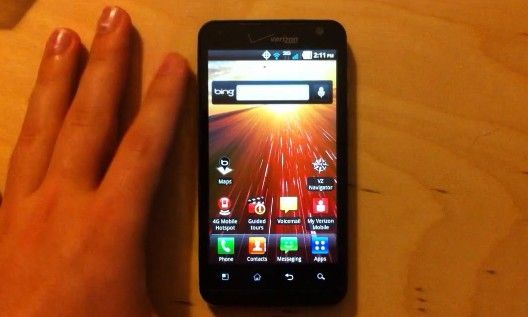We’ve got the LG Revolution on hand and have prepared an unboxing video for you which also features a flash test. I’m happy to report (and somewhat impressed) that the LG Revolution has so far handled YouTube 720p flash video quite well. This surprised me because the Revolution is using a 1GHz Snapdragon CPU as opposed to Nvidia’s Tegra. Have a look below:
Tag Archive | "flash"
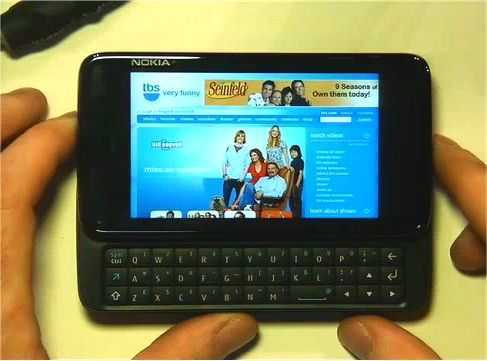
Adobe Demos Flash 10.1 on Multiple Platforms. (Video)
Posted on 06 October 2009
 I have just been watching a very interesting video from the Adobe MAX 2009 conference. It’s the Keynote from Kevin Lynch, Adobe CTO, who demos Flash Player 10.1 for mobile devices, smartphones and netbooks.
I have just been watching a very interesting video from the Adobe MAX 2009 conference. It’s the Keynote from Kevin Lynch, Adobe CTO, who demos Flash Player 10.1 for mobile devices, smartphones and netbooks.
You get to see flash on Maemo, WebOS, Android, an unknown upcoming Android phone, an HP Netbook with Nvidia ION and a smartbook (Mobinova) running Tegra. There’s also the HP Mini 110 running with its Broadcom Crystal HD module (which is interesting news from May that I completely missed.) The Broadcom solution is a PCI Express Mini slot-in module that offloads video decoding (no real 3D support here unlike the ION solution) and could be an interesting option for those with a spare PCI-Express Mini slot.
Anyway, back to the Adobe video. Check out some leveling of the Intel vs ARM playing-field below.
Don’t forget that the CPU is still needed for Flash code operations and that it’s only the H.264 video that can be offloaded to a co-processor. Running Flash code on even a Cortex based platform will still be a big task and will slow down your browsing performance and reduce battery life just as it does on the desktop. Even running flash on a 1.6Ghz Atom is a chore. On the other hand, YouTube fans should get better battery life from the hardware-decoded video.
Why doesn’t someone make a Flash 10 co-processor? (Flashable of-course!)

Flash 10.1 and smooth online video coming to…everything?
Posted on 05 October 2009
It has been clear for some time that Adobe were working with the ARM and Intel community and would eventually acknowledge that there are components on many devices that can decode H.264 better than a CPU. The Menlow platform has always supported H.264 decoding in hardware but the YouTube experience has been extremely poor because Flash doesn’t known about DXVA (Direct X Video Acceleration.) The same applies to many smarphone platforms too. OMAP 3 for example (as seen on N900, Archos 5, Palm Pre) has the silicon dedicated to this process but it’s not used. The CPU is left struggling, draining battery and giving the user a very poor experience.
Adobe finally made the official announcement today that Flash 10.1 is coming…
Adobe Systems Incorporated today unveiled Adobe® Flash® Player 10.1 software for smartphones, smartbooks, netbooks, PCs and other Internet-connected devices, allowing content created using the Adobe Flash Platform to reach users wherever they are. A public developer beta of the browser-based runtime is expected to be available for Windows® Mobile, Palm® webOS and desktop operating systems including Windows, Macintosh and Linux later this year. Public betas for Google® Androidâ„¢ and Symbian® OS are expected to be available in early 2010. In addition, Adobe and RIM announced a joint collaboration to bring Flash Player to Blackberry® smartphones, and Google joined close to 50 other industry players in the Open Screen Project initiative.
Windows Mobile, Palm, Windows, Linux and Mac get the public beta first with Android and Symbian getting betas in 2010. As for full releases, expect the desktop to get it first with handset manufacturers and carriers feeding it in later in 2010. The iPhone platform isn’t mentioned in the release so maybe Apple will double their efforts on HTML 5 and native video support.
You can bet that GPU-accelerated flash will be included in Moblin 2.1 in 2010 for the Pineview and Moorestown platform but Intel do lose a big advantage when the smartphone platforms get the same software. After that point it’s all about design and software.

Flash Video is still a major issue for millions of netbooks.
Posted on 21 July 2009
Nearly two years ago, Adobe announced that the Flash 9 player would support H.264. There was talk of ‘hardware acceleration’ too but event though we’re up to version 10 of the player, its still one of the most CPU-heavy video playback methods there is. Not only does it appear (in testing with many UMPCs over the last 2 years) to be CPU intensive but it still can’t hook into any H.264 hardware decoding that is available on many pc’s out there now. What are Adobe doing?
Is there a problem with hooking into the hardware layer? XP was always difficult in that respect but Windows Vista introduced DXVA 2.0 which was supposed to make hardware acceleration easier. Not easy enough for Adobe it seems.
They must know about the problem because you don’t have to search too far in the netbook computing space to find a ton of questions about the topic. The flash video experience on a netbook, umpc and MID simply sucks! It looks like it will take a big GPU manufacturer to convince (read: pay) Adobe to fix this and that’s why Nvidia and Broadcom have said that things will change in 2010. Unfortunately, that doesn’t help the majority of the small , cheap PCs based on the GMA950 and GMA500 chipset. It looks like nothing will change for devices based on these platforms.
One hope for the big low-cost, low-end (largely Intel-based) notebook and mobile computing market is that Intel get together with Adobe to make sure that the next generation of the netbook platform and mobile computing platform is supported. No-one knows what GPU core is in those platforms yet (Pinetrail and Moorestown) so maybe Intel will surprise us with a Broadcom core and a hardware accelerated Adobe Flash player in Moblin at IDF in Sept. As for the high-end devices, maybe Adobe is just happy to let everything run in big fat, power-hungry CPUs.
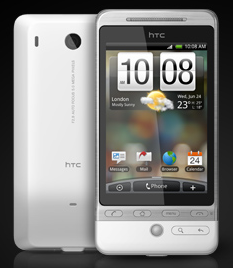
Flash on the HTC Hero brings smartphones one step closer to the FIE
Posted on 24 June 2009
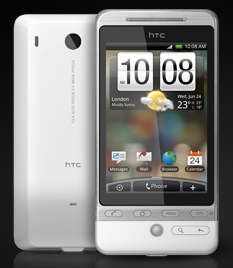 We talk a lot about the FIE (Full Internet Experience) here on ultra mobile PC Portal. The reason many of us are using UMPCs is that there aren’t many non-x86 computers that have provided it. The FIE slowly finds its way onto smaller and smaller devices, and while I wouldn’t say that the new HTC Hero provides a true FIE, it is getting there.
We talk a lot about the FIE (Full Internet Experience) here on ultra mobile PC Portal. The reason many of us are using UMPCs is that there aren’t many non-x86 computers that have provided it. The FIE slowly finds its way onto smaller and smaller devices, and while I wouldn’t say that the new HTC Hero provides a true FIE, it is getting there.
The recently released HTC Hero is HTC’s second Android phone, and among other things, the unit is getting a lot of attention because its web browser can support some Flash content. Adobe has released a good video demo showing the Hero’s flash capable browser, and the implementation looks pretty good, but there are still challenges ahead. Even in through the marketing jargon, it is apparent that work needs to continue until full multi-device flash support has been worked out:
As the first Android device with Flash, the new HTC Hero represents a key milestone for Android and the Flash Platform. With close to 80 percent of all videos online delivered with Adobe Flash technology, consumers want to access rich Web content on-the-go. inch said David Wadhwani, vice president and general manager, Platform Business Unit at Adobe. “The collaboration with HTC offers people a more complete Flash based Web browsing experience today and presents an important step towards full Web browsing with Flash Player 10 on mobile phones in the future [my emphasis]
It is nice to Flash working on an Android based phone, but while most Flash video players will work fine, I wouldn’t (yet) expect to be able to play many of the Flash based games that are out there. The video demo shows an extremely basic game which works simply by clicking the mouse once to drop the penguin, and once more to swing. There isn’t much other input from the user. This basic interaction is currently supported, but some of the more advanced Flash games will be impossible to control until more is done. While the phone might technically have the ability to display the content of a Flash game, many Flash based games rely on keyboard based input and most (if any) certainly aren’t programmed to support multiple mouse inputs (multi-touch) at this point.
Providing some support for Flash is better than no support however, and initiatives like the Open Screen Project will help future devices of this type to inch close to the FIE.

Ti confirms Flash 10 and Adobe AIR on OMAP – 2010
Posted on 02 April 2009
 Adobe and ARM had already announced that they would work together to bring Flash 10 to smartphone platforms through the OpenScreen project so the news this morning from Ti really just shows that the commitment is still there and that we should still be looking at the early 2010 timeframe for deployment.
Adobe and ARM had already announced that they would work together to bring Flash 10 to smartphone platforms through the OpenScreen project so the news this morning from Ti really just shows that the commitment is still there and that we should still be looking at the early 2010 timeframe for deployment.
Adobe AIR is finding quite the success in the microblogging market where tools like Tweetdeck, Twhirl and Twibble make up some of the most commonly used AIR applications. Translating these to small screens will be a challenge but if you consider devices like the Mondi, the MID-like devices will provide some exciting high-speed,large-screen opportunities for developers.
This engagement furthers TI’s long standing commitment to supporting Flash technology and will make it easier for manufacturers to enable uncompromised web browsing on their devices. It also lets them quickly update and run Flash technology based third-party content and applications while reducing time to market on smartphones, mobile Internet devices (MIDs) and other mobile computing devices. TI will also provide Adobe Flash technology support on the ZoomTM OMAP34x-II Mobile Development Platform (MDP), with future support for additional planned OMAP processor-based reference platforms, allowing developers to create rich, Flash technology based content that enhances the overall user experience for a variety of markets. By optimizing Flash technology for the OMAP solution, manufacturers and developers can fully exploit offerings of the platform when accessing content developed with Flash technology. For example, leveraging the OMAP platform’s hardware acceleration capabilities allows for improved video and graphics performance at lower power.

Why do we need Flash on our phones?
Posted on 17 February 2009
I’ve been pondering this question for a long time and have never come up with a decisive answer. Ever since the iPhone came out, people have been criticizing it for not providing the ‘full internet experience’, citing the lack of true flash support. I just don’t get it though, where is the demand?
Several years ago it seems like having a full flash website was all the rage, but since then lots of great web technologies (javascript, ajax, etc.) have been utilized to make highly interactive websites that often outperform their flash counterparts in both performance and utility. These days it seems like the majority of flash content comes from flash video players, and of course the king of all flash video players is YouTube.
When you upload a video you YouTube, by default, is it transcoded to a format playable by most modern smartphones (using built in media players, not flash). I couldn’t tell you for certain, but in my experiences, it seems like the majority of YouTube’s content is available in this format. The iPhone already has a dedicated YouTube application which makes it easy to browse YouTube’s library and play videos. For phones that don’t have a dedicated application, there is the www.m.youtube.com site for browsing the library and doing many of the things you would do on the full version of the site like rating and commenting on movies. Once you get past YouTube as the majority of Flash content, you start to break it down to other video players. Sites like Hulu, Netflix, and many others offer video through flash players as well, but don’t offer nearly the amount of content as there is available on YouTube.
After videos players, I would argue that the second most common flash content is flash advertisements. These things are scatter all over pages these days, and unfortunately, those that design flash ads are not usually concerned with the efficiency of their animations, they just want to animate enough motion and colors to capture your attention. What this leads to is poor performance on the flash content that you actually want. For example, a website like Gametrailers will have a flash banner ad, or a box on the right of the video that plays a flash ad while you are trying to watch a video through a flash player, and flash generally splits the available resources between the two. I’ve seen the framerate on videos drop so low because of other pieces of flash content (like ads) playing on a page at the same time that they are unwatchable, and that is on a full computer. How do people expect mobile phones to handle all the flash content on a page these days, in addition to watching a flash video player? It is important to realize that if you are asking for full flash support, you are also welcoming all the resource sucking advertisements that plague websites. These ads aren’t usually a performance concern for full computers (except the situation I provided above), but on low powered hardware they could be a serious performance ditch and that always leads to reduced battery life.
Aside from flash video players and flash ads, the remaining flash content doesn’t seem to be in high demand (unless I’m missing something important). For example, there are lots of flash games out there, and they are lots of fun. But even if we did have full flash support on mobile phones, I don’t feel like phones are equipped with the necessary control schemes to be able to manipulate that content. Do people expect to be able to play Desktop Defense with the navigation ball on their Blackberry Pearl? I don’t think that it is realistic to expect mobile phones to be able to interface with flash content that was designed with a user, using a mouse and keyboard, in mind. Do people expect flash developers to adapt their flash content to function with the myriad of phone control schemes that are out there?
It all seems rather ridiculous to me, and I still don’t understand what content there is that drives people to ask for flash on their phones. Flash videos players are great, but the majority of content (ie: YouTube) is already available to most modern smartphones. If other flash players want to bring their content to mobile phones, they could do so much more efficiently (for the phones) by following YouTube’s approach. I don’t quite see it being necessary to provide full flash support on mobile phones; what would be the benefit of doing so? Maybe providing a familiar programing environment?
One potential option that I see for the future is that phones begin using a ‘Flash Lite’ standard which provides programmers with a familiar programming environment, and makes it easy for popular flash player sites to create simple flash applications (like video players) that will launch from a link on a website into a Flash Lite application on the phone.
I don’t think we’ll see full flash support (ie: flash players, apps, and ads embedded directly into websites) in mobile phones for a long time because it just doesn’t make sense when you weigh the content gain against the performance and battery life concerns, and isn’t practical when you consider the logistics of controlling that content with various phone control schemes.
I’ve been using an iPod Touch/iPhone 3G for nearly a year now and I can’t say that there are many times while using them that I’ve said to myself “Wow I wish this thing supported flash”. Sure, occasionally there is a video I want to watch that isn’t hosted on YouTube, but on another flash player instead; is that justification to ask for flash on phones? In my opinion, the answer is no, but I want to hear the thoughts of others. When you are using your mobile phone for web browsing, what content do you come across that makes you wish you had full flash support?
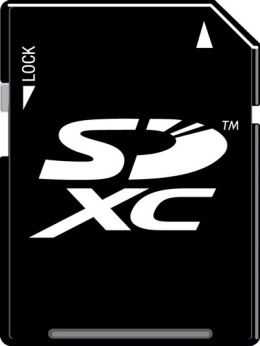
SDXC standard pushes speed and storage limits.
Posted on 07 January 2009
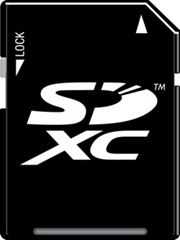 SD cards have always been handy items for the mobile user. If you’ve got a set of kit that uses it, it’s often the quickest way to transfer large amounts of data but with the SDHC limits being way below what most people would require for, say, a large music, video or even photo library, it can’t really be used for serious storage.
SD cards have always been handy items for the mobile user. If you’ve got a set of kit that uses it, it’s often the quickest way to transfer large amounts of data but with the SDHC limits being way below what most people would require for, say, a large music, video or even photo library, it can’t really be used for serious storage.
SDXC is the next in-line standard from the SD association and it promises to break those limits by offering storage up to 2TB. The other interesting thing, for mobile fans, is that they would be fast enough to perform as small, cheap drives meaning mobile device manufacturers can offer a basic OS and let the reseller or user make up their own storage offerings. I assume it will push the price down too. I wouldn’t expect them to have the error correction or wear-leveling that SSD drives have but with a theoretical TX rate of 104MB these would be perfect as storage devices.
The standard is expected to be ready this quarter so expect mainstream devices next year.
The next-generation SDXC (eXtended Capacity) memory card specification, announced today at the 2009 International CES, dramatically improves consumers’ digital lifestyles by providing the portable storage and speed needed to store weeks of high-definition video, years of photo collections and months of music to mobile phones, cameras and camcorders, and other consumer electronic devices. The new SDXC specification provides up to 2 terabytes storage capacity and accelerates SD interface read/write speeds to 104 megabytes per second this year, with a road map to 300 megabytes per second.
Press release. Via Gizmodo.
 |
| |||
 |
| |||
 |
| |||
 |
| |||
 |
| |||
 |
| |||
 |
| |||
 |
| |||
 |
| |||
 |
|

